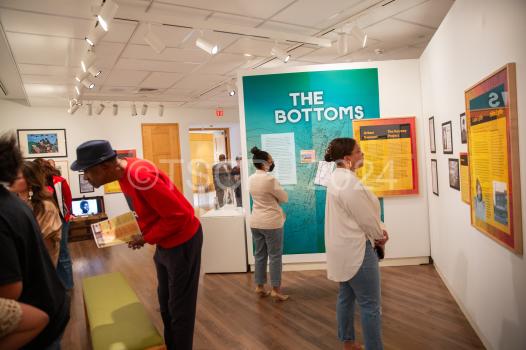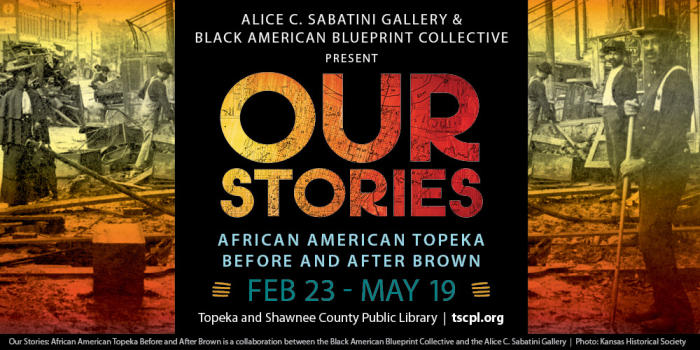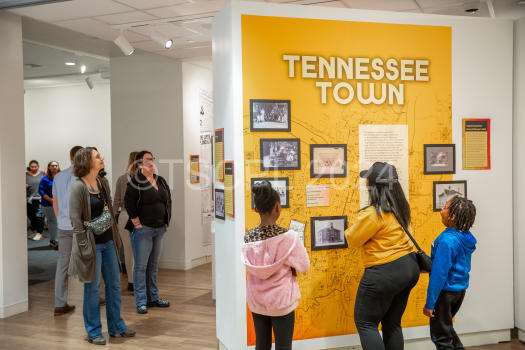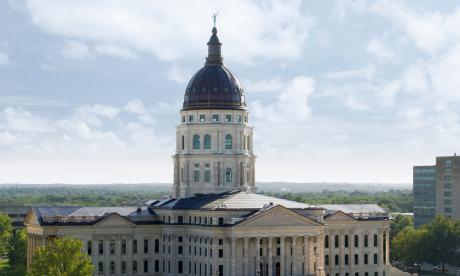Telling Topeka’s Story from a Black Perspective:
Don’t Miss ‘Our Stories’ on Display at the Topeka and Shawnee County Public Library
Blog written for Visit Topeka by Sherri Camp, project director for The Black American Blueprint Collective
The Black American Blueprint Collective, also known as The Black Collective, was founded in 2022 by Topeka community members, business leaders, teachers, and historians who aimed to celebrate the history of the city’s Black community from a Black perspective. Our mission is to educate the community, particularly the youth, about our history before and after the landmark Brown v. Board case.
Our stories are best told in the context of our history, with a sense of honor, pride, and respect for those who came before us. Topeka's Black community has influenced the city's educational institutions, spiritual life, politics, industries, and arts. By recognizing and retelling our stories, we honor generations of African American Topekans and their legacies. In collaboration with the Topeka and Shawnee County Public Library, we created an exhibition where the voice truly belongs to Topeka’s Black community. Our exhibit, now on display at the library, is titled “Our Stories: African American Topeka Before and After Brown.”
African Americans have been in Kansas from their early years as enslaved people, as Freedom Seekers through the Underground Railroad, and later as settlers. After Emancipation and during the Reconstruction era, many African Americans relocated to Kansas, considered the Promised Land, a place of freedom and opportunity.
After reaching Topeka, our pioneering ancestors built vibrant and thriving communities in historic Black neighborhoods such as Redmonville, The Bottoms, Mudtown, Tennessee Town, The Sands, Ritchie's Addition, and Pierce Addition. Each of these communities made unique and significant contributions to the growth and development of Topeka and the legacy of African American culture.


The Bottoms, for example, was a thriving African American community that spanned 20 blocks. It became a hub for African Americans due to segregation and city-wide restrictions that limited where we could live, work, attend school, and even shop. The Bottoms community had schools and churches at its center and places for Black entertainment. It was also home to many black-owned businesses, such as Lytle’s Drug Store and the Chiles Hotel, owned by businessman and publisher Nick Chiles. These businesses cultivated and supported the Black economic stability of the area, making it Topeka's own Black Wall Street.
However, in the 1950s, urban renewal efforts led to its destruction, and residents were displaced without adequate compensation. This loss resonates even today as African Americans in Topeka continue to rebuild our communities and the economic stability provided by The Bottoms.
Like The Bottoms, the other African American communities in Topeka created churches, businesses, and schools to support livelihoods and educate our children. Despite segregation, these communities thrived, offering fellowship, entertainment, sports, and music. However, many of those days are now just a memory for our elders. Preserving these stories for future generations is crucial, so that they can learn from our past and build a better future.

On May 17, 2024, we commemorate the 70th anniversary of a landmark decision in the Brown v. Board of Education case. The Our Stories exhibition is on display in the Topeka and Shawnee County Public Library's Alice C. Sabatini Gallery from Feb. 23 to May 19 to celebrate and honor our community's stories. We hope this exhibit inspires people to learn and advocate for equality and justice in our communities and beyond. Below is a preview of what you can expect to see.
“When I landed on the soil, I looked on the ground and I says this is free ground. Then I looked on the heavens, and I says them is free and beautiful heavens. Then I looked within my heart, and I says to myself I wonder why I never was free before?”
- John Solomon Lewis, Exoduster, Leavenworth, KS
In the years after the Civil War, African Americans from southern states experienced increased racism and violence. After the dismantlement of Reconstruction, an unfair system of laws called “Jim Crow” limited rights and hard-won freedoms. This provoked an estimated 40,000 African Americans to move to northern states, especially Kansas.
Why Kansas?
The 1854 Kansas-Nebraska Act let people who lived in the Kansas Territory vote on whether slavery should exist there. This sparked a land rush of people from slave and free states who sought to determine Kansas’ fate. After years of bloody conflict, Kansas entered the Union as a free state on January 29, 1861. After the Civil War, Kansas’ Free State status and available land made it uniquely appealing.
Why Topeka?
For newly arrived African Americans, Topeka’s relatively stable economy, employment opportunities, and educational institutions provided avenues to a prosperous life in freedom. Exodusters worked for the railroad as farmers, laborers, domestic workers, entrepreneurs, and in politics. They faced numerous challenges, including discrimination and racism, hostility, and struggles for economic stability. Despite these difficulties, the Exodusters’ presence contributed to the growth and diversity of the city. Existing Topekans actively supported the Exoduster migration. Benevolent societies, including the Kansas Freedmen’s Relief Association, churches, and community leaders provided housing, employment assistance, and social support for the newcomers to Topeka.
“Our Stories: African American Topeka Before and After Brown” is filled with eye-catching exhibit information about Topeka's Black history in context. We hope you’ll learn something new to share with others in our community or elsewhere.












